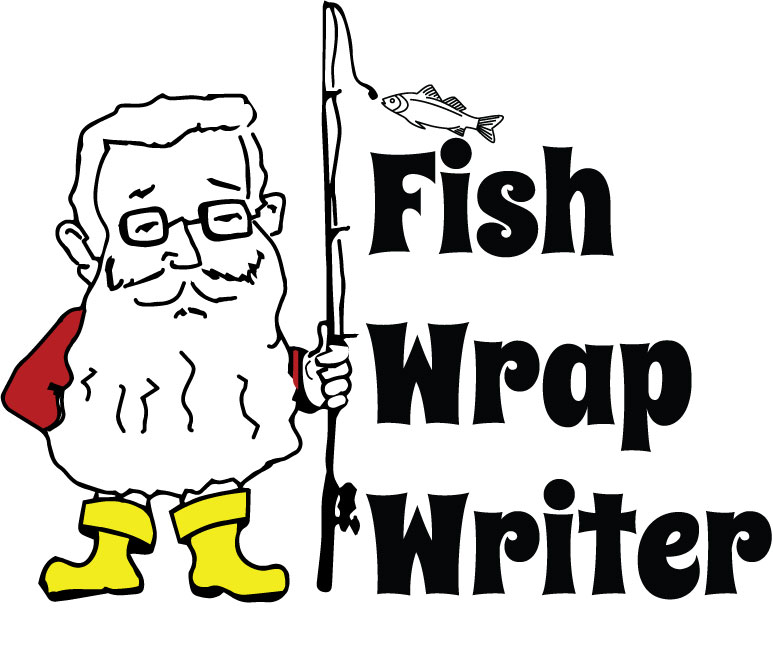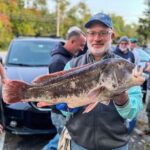Spring’s greatest day is next Saturday and after a fresh coat of snow a few nights back, there’s a good chance some ponds will still be frozen. This could make the expected jockeying for spots that much more tricky this year, unless you can find a quiet corner to set up your tip-up’s and lawn chair. Approximately 3,000 trout will be set free in ponds and lakes throughout the state in addition to those stocked back in January, before there was any snow on the ground, in 8 of those ponds.
Connecticut has changed its trout regulations so this year Beach Pond in Exeter, which historically followed their rules, will open on April 11 as well. Peter Aarrestad, Director of DEEP’s Inland Fisheries Division, said that, “This change provides an additional week of fishing opportunities for both resident and non-resident anglers targeting trout or fishing for other species such as largemouth and smallmouth bass found in trout waters”.
For the parents of young fishermen, RIDEM has set aside several ponds for those 14 years and younger. Frosty Hollow Pond in Exeter, Hopkinton’s Lloyd Kenney Pond, Geneva Brook & Pond in North Providence, Lapham Pond in Burrillville, Seidel’s Pond in Cranston and Cumberland’s Silvy’s Pond are all designated areas and with the expected crush of Saturday morning anglers, these are solid safe havens for making sure kids get a fair shot at experiencing the magic of opening day. For bait, traditionalists stick with a hook and worm, sunk a few feet below a classic red and white bobber. Since hatchery raised fish are fed from above, you might want to keep your bait closer to the surface to catch a few looking up for their morning meal. There are also several commercially produced balled baits in trippy colors that stink just enough to draw some attention before eventually floating off the hook, leaving the pond covered in pink yellow and green gumdrops.
RIDEM’s 2015 trout stamp is ready for the new fishing licenses. Illustrated by New Bedford artist and RISD graduate, Robert Jon Golder, it beautifully depicts the brown trout, Salmo trutta. Mr. Golder, who for 20 years was the Scientific Illustrator at the Marine Biological Lab at Woods Hole, also worked with RIDEM freshwater biologist Alan Libby to illustrate the Inland Fishes of Rhode Island, a thorough introduction to 70 local species, with detail of their ranges habitats and history’s. This book is a complete and necessary survey of our fresh waters and can be purchased throughout the state. If you require a go-to reference book for Rhode Island fishes, this book should be your first choice.
Browns here in the US are of fine German stock, shipped to the states back in 1883 with the permission of the US Fish Commissioner which, after a very long and winding road, became the National Marine Fisheries Service. The first legal stocking of 4900 fish occurred the following year in Michigan’s Baldwin River. The trutta refers more specifically to the sea-run browns, which are anadramous and not common in our waters. A close species, the Salmo fario, prefers river environments and Salmo lacustris is the species living its life and spawning solely in lakes. Dr. Robert Behnke, who authored the seminal book, Trout and Salmon of North America, wrote that these 3 forms of trout have sufficiently intermingled to be genetically considered “the American brown trout” with the taxonomic subspecies of trutta. Class dismissed.
The 2015 freshwater fishing license costs $18, the hunting fishing combination licenses is $33 and the Trout Conservation Stamp will cost you $5.50, which are the same prices as last year. You do don’t need a stamp if you release your catch, however, you will if fishing in designated “catch and release” or fly-fishing only waters. Despite several feet of ice in many ponds, trout stocking is in full swing. RIDEM biologist and anadramous fish expert Phil Edwards assured me they are well equipped to cut through ice with chainsaws to get fish into the lakes and ponds by next week. That’s a high quality image for those who complain about how their tax dollars are used. A complete list of stocked ponds can be found at the RIDEM website.
At last week’s Southern New England Recreational Fishing Symposium, the RI Salt Water Anglers Association brought together recreational fishermen and the scientists who study local fish stocks for some poignant discussion about fish and our shared ecosystems. A major focus was rebuilding our local abundance of fishes and trying to restore what we once had using new science and technologies. Much of the day covered the absolutely critical forage fishes, like menhaden, sea and river herring.
One highlight was Brett Fitzgerald of the Snook & Game Association down in Florida, who showcased a new cell phone app to link fishermen, scientists and regulators, called iAngler. There has long been suspicion that modern fisheries decisions are based on poorly generated data, often derived from outdated collection methods. To help partially alleviate the distance between what fishermen actually land on deck and what scientists create on flat screens, Brett decided to put fishermen in charge of the data by allowing them to record what they caught, along with sizes, measurements, areas, baits, etc. This comes with the important caveat that secret spots, if there really are any left, are not given up, as location coordinates are partially blocked. The data is uploaded by scientists who then help craft policy and regulation while it remains accessible to the fishermen so they can use it, along with embedded tide, pictures, weather and regulation details, the next time they go fishing. It is assumed fishermen are logging in true details, not that any fisherman would do otherwise, but the white coats have some algorithms to compensate for the occasional stretch. This app has the potential to reshape the data stream on the whole east coast, giving recreational fishermen a much needed real voice in how fisheries are managed, something long overdue on a local and national level.
Todd Corayer is a life-long fisherman who lives not far from the Saugatucket with his wife, who supports his fishing mainly to get him out of the house and a young son who regularly catches more fish than him.





0 Comments